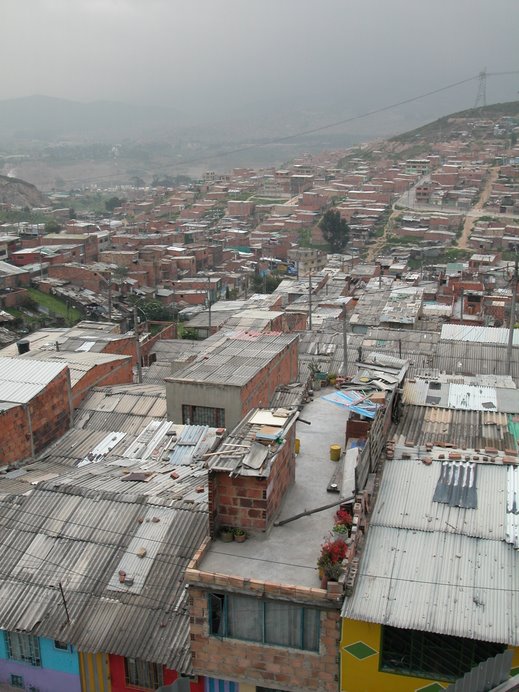 |
| A column decorated with goat hides represents the dowries paid by young Wayuu men to their brides' families. |
In this matrilineal society, the valuables are supposed to go primarily to the family of the bride's mother, according to Bogotá's Museum of Regional Dress, which has a small exhibition on now about the practice.
 |
| The Museo de Trajes Regionales, located on Calle 10 just above Plaza Bolivar, is one of La Candelaria's lesser-known museums. |
The exhibition consists primarily of a column covered with goatskins representing the animals given by the groom. The young man generally must collect gifts from relatives and friends to amass a sufficient dowry. It's a controversial practice which persists mostly in rural areas of La Guajira.
Despite appearances, the museum's website denies that this represents a bride price, calling the payment rather the groom's 'appreciation of the prestige of the bride and her family.
"In no case is this a sale or trade of a human being," says the website.
 |
| Wayuu traditional dress. |
But the dowry is perpetuated across generations, since fathers insist that they be paid, to compensate them for the dowry they themselves paid their own wives' families.
The Wayuus' traditional territory was divided in two by the Colombian-Venezuelan border. While this certainly separated families, it also created a privilege for the Wayuu people, who usually can cross the border freely. Many Wayuu, particularly women, have become wealthy traders - and contrabanders.
The Guajira peninsula has a history of lawlessness, from contraband and pirates. Henri Charrière, the protagonist and author of Papillon, cohabited with Wayuu women while hiding out after escaping from Devil's Island.
The Wayuu divide themselves into clans, based on maternal descent, and these clans have historically
carried out murderous feuds. When paramilitary groups wrested control of the region from guerrillas in the mid-2000s, they sided with some clans against others, committing massacres and forcing people to flee to Venezuela.
The last few years, the Wayuu's always-dry territory has suffered a severe drought, killing many children. The situation has likely been worsened by coal mines, which have diverted streams and consume huge amounts of the region's scarce water.
And altho the Wayuu exhibition is small, the dress museum is worth visiting to see the regional and historical clothing worn by different groups of afro, indigenous and white Colombians.
 |
| Campesinos from Huila Department. |
 |
| Guambiano Indigenous people from Huila Department. |
 |
| A mask from an Amazonian indigenous tribe. |
 |
| A view from the museum's interior. |

























